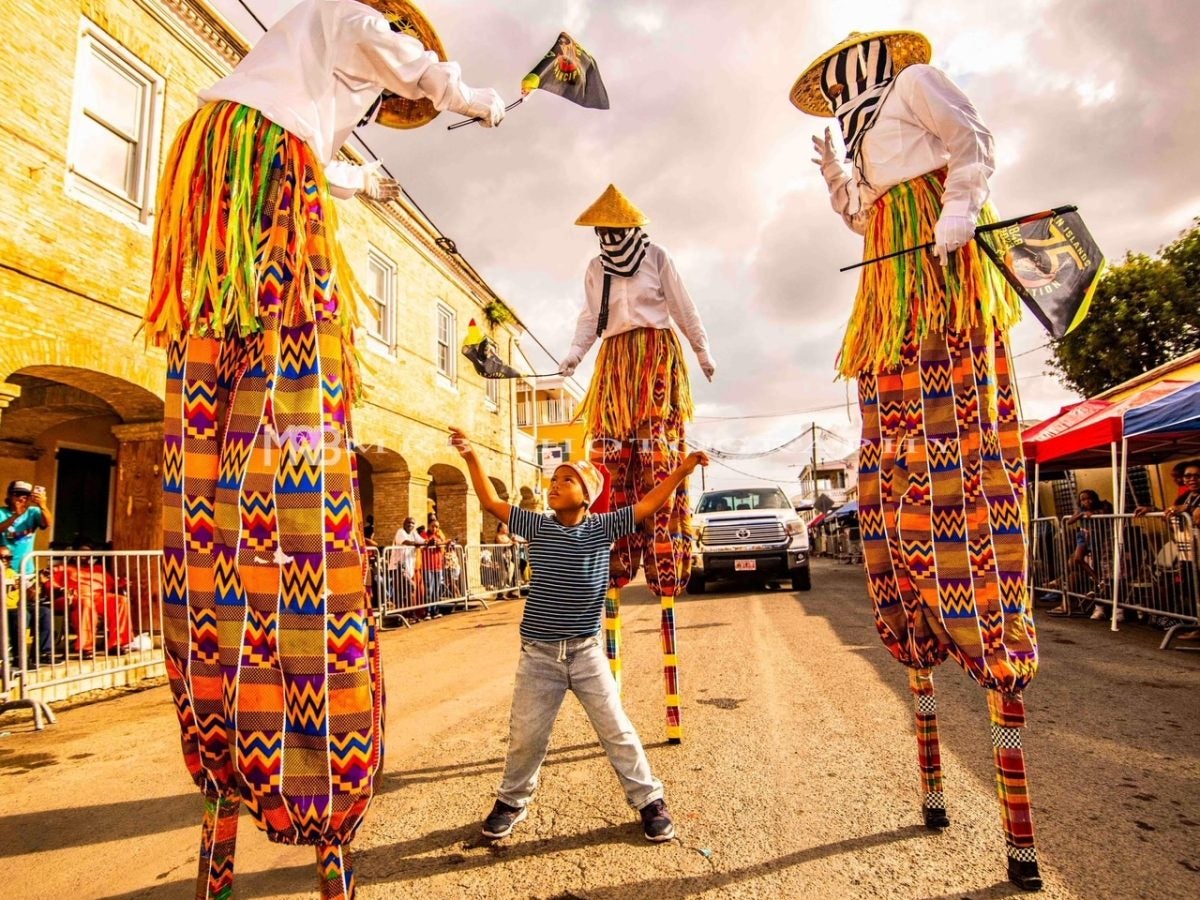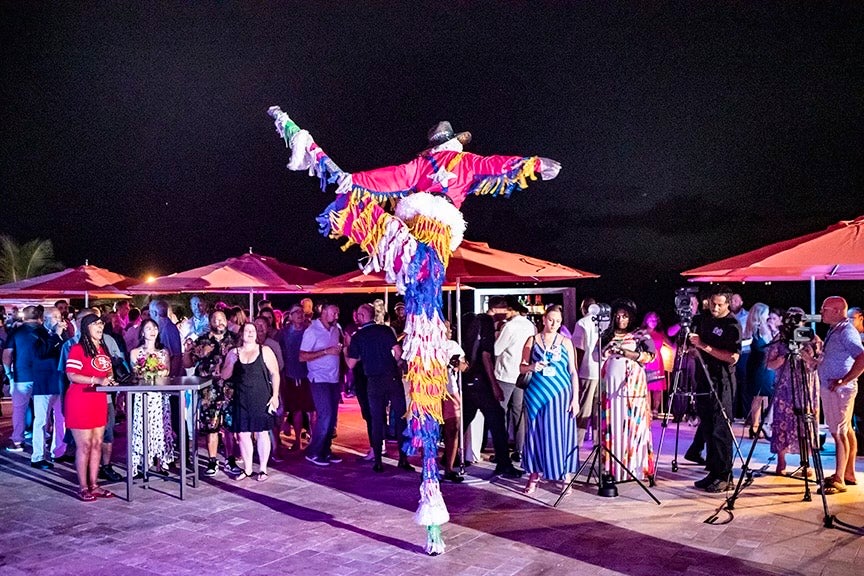
Though they’re young in age, when you see 12-year-old Tanjia George and her 5-year-old sister Micah, they’re grand in size. The two recently performed as stilt-walking Moko Jumbies at the St. Croix Christmas Carnival parade in January. The sisters, who live in St. John, take their craft seriously, practicing weekly for the chance to perform in front of thousands of parade-goers.
“I saw my sister perform and it was something that I wanted to do too,” says Micah, who joined the troupe shortly after her fifth birthday. Micah and Tanjia have been attending Carnival celebrations their whole lives and their mom, Tanji Potter, once performed as a Moko Jumbie when she was younger, making it a family affair.
“I think it’s cool to keep up the tradition,” Tanjia says. “A lot of people are scared to do it because they’re afraid of falling, but at the end of the day, if you think about falling then you’re probably going to fall. It takes a while to learn how to balance, but once you get it, it’s really fun.”
The pre-teen tells me that the name “Moko Jumbie” is an amalgamation of two different cultures: In Central Africa, “Moko” (sometimes spelled “Mocko”) means healer, and “Jumbie” is a Creole word that means ghost or spirit. According to African lore, the towering stilt walkers are protectors whose height allows them to watch over villages. The tradition was brought to the U.S. Virgin Islands over 200 years ago by enslaved Africans, and today, Moko Jumbies are an essential part of festivals and Carnivals.
“The Moko Jumbies that appear in our Carnival celebrations are always synonymous with protection,” says Gabrielle Querrard, U.S. Virgin Islands native and cultural ambassador. ”The Moko Jumbie is one of the most important cultural and historical icons in the Virgin Islands, as it stands to remind us of our interconnectedness to our African ancestors who used oral tradition as a vehicle to pass this wisdom forward for hundreds of years.”
The girl’s troupe, Yisrael’s New Generation, features stilt walkers from ages five through adulthood and they perform in St, Croix, St. John, and St. Thomas Carnival celebrations. The stilt walkers must cover their faces as they perform, even in practice, as a way to embody the spirit of a Moko Jumbie, and during carnival celebrations, costumed stilt walkers weave their way between masqueraders, never breaking their stride.
“It’s a very proud moment to see my daughters on the stilts,” Potter explains. “When they’re in costume, they’re wearing a mask, but I always know which ones are my kids. I’m a huge supporter, and I’m there for all of their practices and performances. I’m like a soccer mom – but a Moko Jumbie mom.”

Though these performers are featured prominently during Carnival seasons in the USVI, the figure is also embedded deeply into the everyday culture of the Virgin Islands. Though Mokos are healing spirits, other Jumbies are believed to be mischievous or malicious spirits that roam the islands causing mayhem.
“Growing up in the Virgin Islands, my elders often spoke about the presence of Jumbies on our islands,” Querrard says. “These Jumbies, usually described as supernaturally tall, are spirit entities that could be protective or malicious. As children, when items would go missing or unexplainable occurrences took place, Jumbies were often blamed for the misfortune. On the other hand, when someone avoided an unexpected peril or stumbled upon a stroke of good luck, it was also believed that Jumbies were responsible.”
The performers embodying the Jumbies wear a costume that is a nod to the local culture and African traditions. It’s common to see stilt walkers wearing pants made with the official madras print of the USVI, a copyrighted print featuring bright yellow, turquoise, red, pink, and royal blue hues. Potter says that Yisrael’s troupe wears pants sewn from fabric shipped from Africa to pay homage to the Moko Jumbie’s roots. The U.S Virgin Islands Tourism Department has also adopted the Moko and features the colorful stilt walkers on their official branding.
“For more than 200 years, the Moko Jumbie has been a standing symbol of culture, spirituality, and perseverance for the U.S. Virgin Islands and many Caribbean islands,” Joseph Boschulte, commissioner of U.S. Virgin Islands Department of Tourism tells Essence. “The deep connection to the Moko Jumbie continues to grow in the territory, as many children and new residents embrace learning the tradition.”
The U.S. Virgin Islands is often overlooked in conversations about culture in the Caribbean, but residents of the Virgin Islands are making sure that the Moko Jumbie tradition continues to live on through the next generation.
“The Moko Jumbies are a big part of our culture,” says Potter. “We’re not just preserving African culture – we’re living it. This is just what we do. That’s part of the reason we have Carnivals across the islands – to make sure these traditions last forever.”





